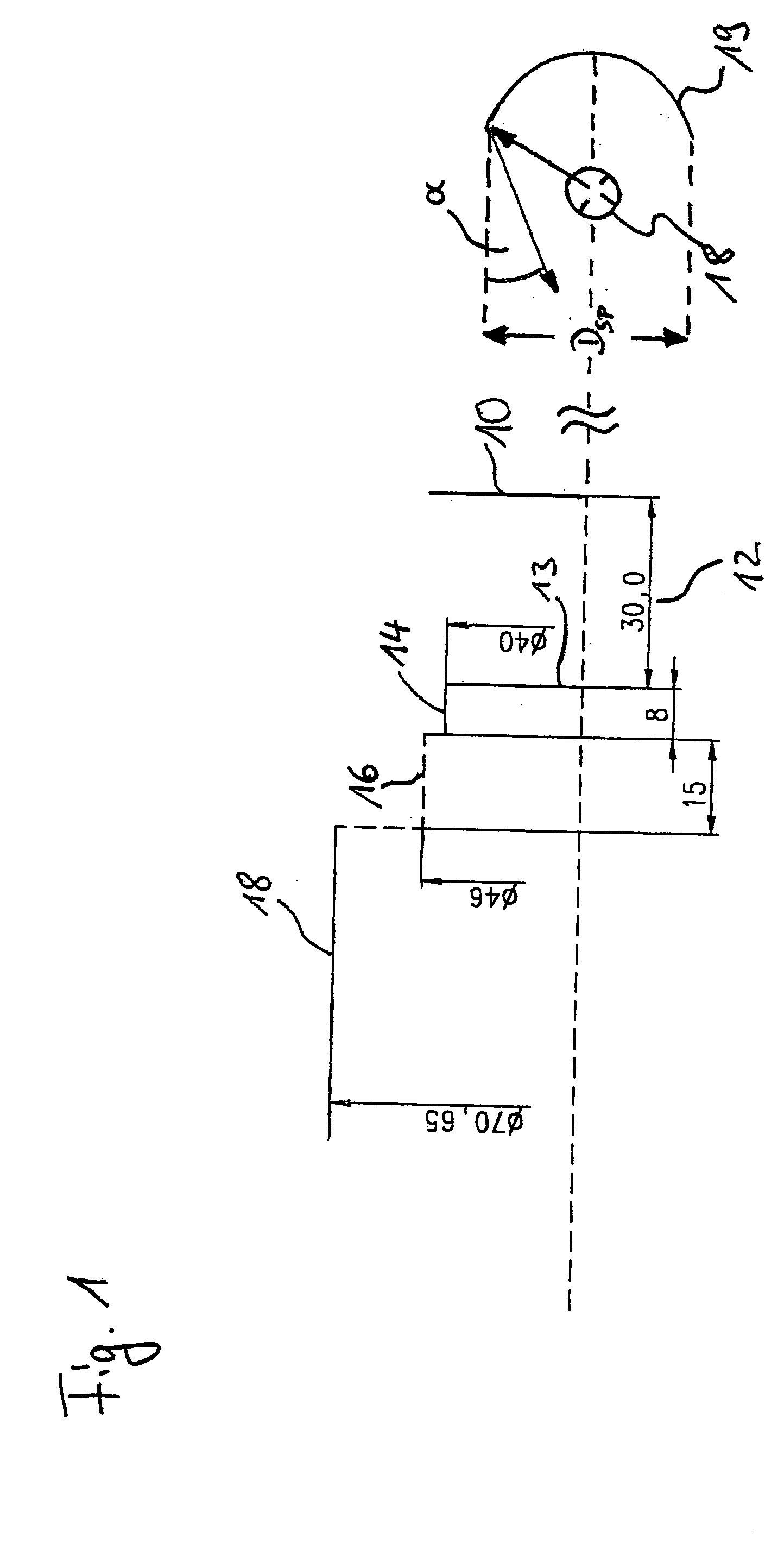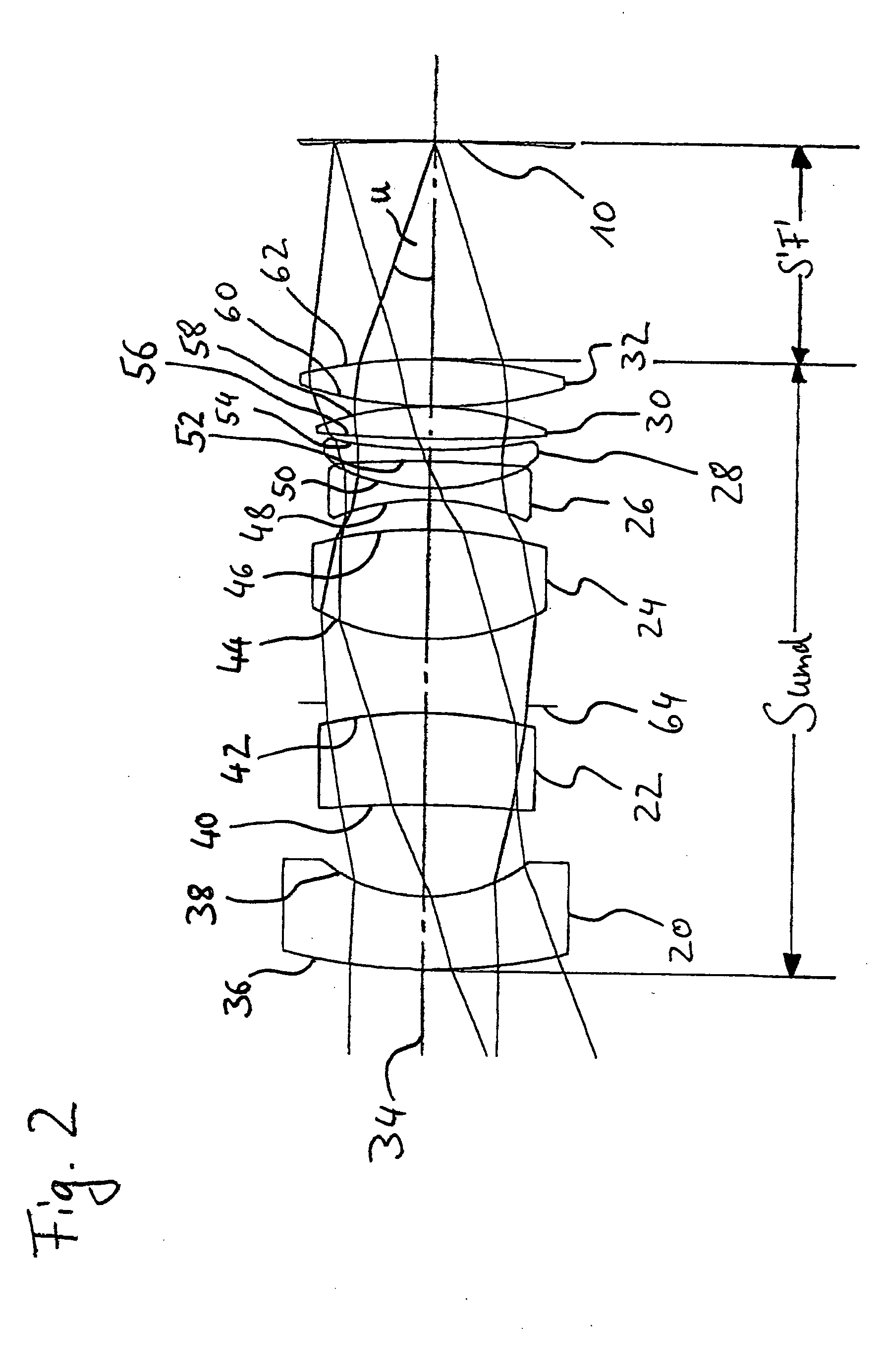High-aperture wide angle cinema projection lens
a projection lens and wide angle technology, applied in the field of high-aperture projection lenses, can solve the problems of light loss, projection lenses exhibit problems, and thereby occur light loss,
- Summary
- Abstract
- Description
- Claims
- Application Information
AI Technical Summary
Benefits of technology
Problems solved by technology
Method used
Image
Examples
second exemplary embodiment
[0105]FIG. 10 shows the principle of the design of a cinema projection lens in accordance with a second exemplary embodiment. This is a projection lens with a focal length of 47.5 mm and a stop number of k=1.7.
[0106] Once again, the projection screen is to the left, and the film plane 10 to the right. The projection lens comprises the following elements in sequence from left to right: [0107] a first negative lens in the form of a biconcave lens 110, [0108] a second positive lens in the form of a biconvex lens 112, [0109] a third positive lens in the form of a biconvex lens 114, [0110] a fourth negative lens in the form of a biconcave lens 116, [0111] a fifth negative lens in the form of a biconcave lens 118, [0112] a sixth positive lens in the form of a biconvex lens 120, [0113] a seventh positive lens in the form of a biconvex lens 122.
[0114] A stop 64 is again arranged between the second positive lens 112 and the third positive lens 114. The precise data on the individual surfac...
PUM
 Login to View More
Login to View More Abstract
Description
Claims
Application Information
 Login to View More
Login to View More - R&D
- Intellectual Property
- Life Sciences
- Materials
- Tech Scout
- Unparalleled Data Quality
- Higher Quality Content
- 60% Fewer Hallucinations
Browse by: Latest US Patents, China's latest patents, Technical Efficacy Thesaurus, Application Domain, Technology Topic, Popular Technical Reports.
© 2025 PatSnap. All rights reserved.Legal|Privacy policy|Modern Slavery Act Transparency Statement|Sitemap|About US| Contact US: help@patsnap.com



